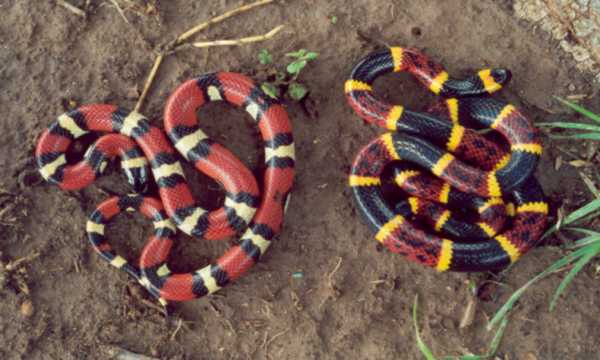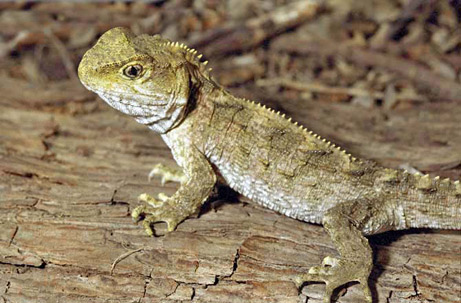Mimicking other people or personality is considered as one of the popular comedy act by us. It may look like an intelligent act for human, but nature has already adopted this intelligence for some other reasons. In this article we are covering the expert mimics in the Reptile world.
Milk snake (Lampropeltis triangulum) found in both Northern and Southern American continents are harmless snake. This snake has similar banded appearance like coral snake. This is a form of mimicry and happens only those regions where milk snake and coral snake are found together. In other regions, milk snake doesn’t look like the coral snake. As coral snake is poisonous, this mimicry is to scare any enemies. There is a difference in the band pattern of the both snakes, so it can be identified by human. There are sayings like this to identify the actual poisonous snake: ” Red next to black, you can pat him on the back; red next to yellow, he can kill a fellow.”
Similar to Milk Snake, Scarlet King Snake also mimics Coral Snake . Scarlet King Snake is also non-poisonous. They are born with white bands. The juveniles develop the yellow, apricot, or tangerine colored banding slowly.
The above two are example of snake mimicry where the harmless snakes mimic like a poisonous snake to keep their enemies away. This characteristic is called Batesian Mimicry. It was discovered by scientist H.W. Bate over a hundred years back and named after him only.
Some blind legless lizards that live under the ground trick their enemies by showing their tails. The under side of the tail is usually red or yellow that looks like an open mouth. The enemy attacks the tail mistaking it for head. The tail can withstand much more injury that the head and so the life of the lizard is saved.
Many Lizards have a tail differently coloured from rest of their body. When the enemy attacks them, they break off their tail. The tail jumps about on the ground that confuses the enemy. The Lizard makes a good escape during this confusion.
Another Lizard(Eremias lugubris) in Souther Africa mimics notorious and noxious ‘oogpister’ beetles when young. The adults are cryptically coloured and blend with the red-tan colours of the Kalahari semi-desert. However, the juveniles are jet-black and white and very conspicuous and move with stiff, jerky movements with their backs strongly arched and with the paler-coloured tails pressed to the ground. They actually just mimic the Oogpister beetles found in the region and predators avoid the threat of the pungent, acidic fluid sprayed by these beetles when threatened.
A Lizard(anguid) of northeastern Brazil shows striking similarities in color, pattern, size, behavior to the noxious millipede, Rhinocricus albidolimbatus, when it is juvenile. This is also believed to be a Batesian Mimicry.
Video on Lizard Mimicing Beetle






Recent Comments